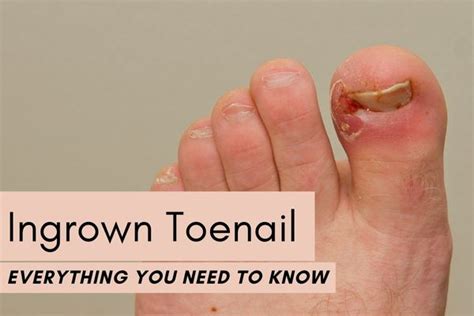Ingrown Toenail: Everything You Need to Know
An ingrown toenail, a common and often painful condition, occurs when the edge of a toenail grows into the surrounding skin. This can lead to inflammation, redness, swelling, and even infection. While seemingly minor, an untreated ingrown toenail can become significantly problematic. This comprehensive guide will cover everything you need to know about ingrown toenails, from causes and symptoms to treatment and prevention.
What Causes Ingrown Toenails?
Several factors contribute to the development of ingrown toenails. Understanding these causes can help you take preventative measures and reduce your risk.
- Improper Nail Trimming: The most common culprit is cutting toenails too short or curving the edges. This creates a sharp edge that can easily dig into the skin.
- Ill-fitting Shoes: Tight shoes, particularly those with narrow toe boxes, put pressure on the toenails, forcing them to grow into the skin. High heels are notorious for this.
- Injury to the Toenail: Trauma to the toe, such as stubbing it or dropping something heavy on it, can cause the nail to grow abnormally.
- Genetics: Some individuals are genetically predisposed to ingrown toenails due to the shape or curvature of their nails.
- Fungal Infections: Fungal infections can thicken the toenail, making it more likely to grow into the skin.
- Ingrown Toenail Symptoms
Recognizing the symptoms of an ingrown toenail is crucial for timely intervention. Early treatment can often prevent complications. Common symptoms include:
- Pain: A throbbing or aching pain in the affected toe.
- Redness and Swelling: Inflammation around the ingrown portion of the nail.
- Pus: A yellowish or whitish discharge indicating infection.
- Tenderness to the Touch: The area around the ingrown nail is very sensitive.
- Warmth: The affected toe might feel warmer than the other toes.
What are the signs of an infected ingrown toenail?
An infected ingrown toenail will typically exhibit more severe symptoms than a non-infected one. These include increased pain, significant swelling, redness spreading beyond the immediate area, the presence of pus, and possibly a fever. If you suspect an infection, seek medical attention immediately.
How to Treat an Ingrown Toenail at Home
For mild cases, home treatment may be sufficient. However, it's crucial to consult a podiatrist if the condition worsens or doesn't improve.
- Soak the Foot: Soaking the affected foot in warm, soapy water several times a day can help soften the skin and reduce inflammation.
- Elevate the Foot: Elevating the foot helps reduce swelling.
- Apply a Warm Compress: Applying a warm compress to the affected area can help soothe pain and inflammation.
- Over-the-Counter Pain Relievers: Ibuprofen or acetaminophen can help manage pain.
- Gentle Cleaning: Clean the area gently with soap and water to prevent infection. Avoid harsh scrubbing.
- Loose-Fitting Shoes: Switch to loose-fitting, comfortable shoes that don't put pressure on the affected toe.
How long does it take for an ingrown toenail to heal?
The healing time for an ingrown toenail varies depending on the severity of the condition and the chosen treatment method. Minor ingrown toenails treated at home may heal within a few days to a couple of weeks. More severe cases or those requiring medical intervention might take longer.
When to See a Doctor
While home remedies can be effective for mild cases, it's crucial to seek professional medical help if:
- Severe Pain: The pain is unbearable and interferes with daily activities.
- Signs of Infection: Pus, significant swelling, redness spreading beyond the toe, or fever are present.
- Diabetes: Individuals with diabetes are at higher risk of complications from ingrown toenails and should consult a doctor immediately.
- No Improvement After Home Treatment: If symptoms persist or worsen after several days of home treatment.
A podiatrist can provide various treatments, including:
- Partial Nail Removal: The doctor may partially remove the ingrown portion of the nail.
- Nail Avulsion: In severe cases, the entire nail may need to be removed.
- Phenol Treatment: This chemical treatment prevents the nail from regrowing in an ingrown manner.
- Antibiotics: If an infection is present, antibiotics may be necessary.
Preventing Ingrown Toenails
Prevention is always better than cure. Follow these tips to reduce your risk of developing ingrown toenails:
- Trim Your Toenails Straight Across: Avoid curving the edges of your toenails.
- Keep Toenails at a Moderate Length: Don't cut them too short.
- Wear Properly Fitting Shoes: Choose shoes that provide ample space for your toes.
- Keep Your Feet Clean and Dry: This prevents fungal infections.
- Moisturize Your Feet Regularly: This can keep skin healthy and less prone to ingrown toenails.
By understanding the causes, symptoms, treatment options, and preventative measures, you can effectively manage ingrown toenails and minimize discomfort. Remember to consult a podiatrist for any serious concerns or persistent symptoms. Early intervention is key to preventing complications and ensuring a swift recovery.

